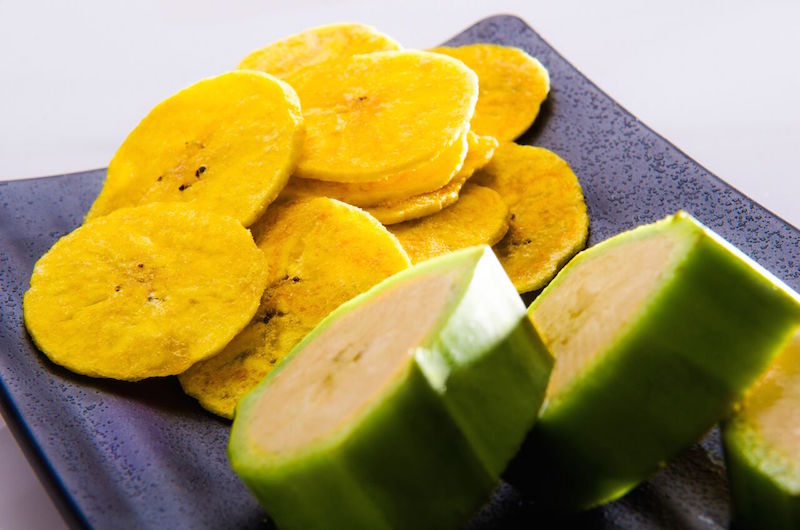EU-Ecuador trade agreement promotes export advance

Since Ecuador’s accession into the EU-Colombia/Peru trade agreement as of January 2017, already the Andean nation’s non-oil exports to the European Union (EU) have increased. Fresh Fruit Portal speaks with Juan Patricio Navarro, the director of ProEcuador in the Netherlands, to learn about the initial impact and overall opportunities.
“This trade agreement brings Ecuador back onto a level playing field with our traditional competitors – Peru and Colombia, and also Central America – especially considering our export offer,” explains Navarro.
The impact of the deal has been instantaneous. In the first six months of 2017 non-oil exports from Ecuador to the EU rose by 14.95% in value (to US$1.6bn) and 12.33% in volume (to 1.4 million metric tons, MT) year-on-year, according to the Central Bank of Ecuador.
Exports comprised: agricultural and non-agricultural products, such as shrimp, processed food and canned food.
“We have been very happy to see much more interaction and interest from European companies both prior to the deal and immediately after the agreement entered into force,” Navarro comments. “We expect this trend to continue.”
Some 80% of Ecuador’s agricultural exports comprise bananas, cacao, flowers, exotic fruits, fruit concentrates, palm oil, and some processed products such as shrimp and tuna.
Under the deal, the export volume of Ecuador’s exotic fruits, niche and non-traditional products are also expected to increase. Initially, though, bananas will experience the main benefit thanks to changes to the tariff and quota system.
This year the import duty on Ecuadorian bananas entering the EU stands at €97 per MT. Next year it will reduce to €90, and in 2019 it will decrease to €83. From 2020 onwards it will fall to €75 per MT.
At the same time, the annual volume quota will increase from 1,801,788MT in 2017, to 1,888,127MT in 2018, before rising to 1,957,500MT in 2019. In 2020 there will be no quota at all.
The timeframe is designed to allow the competition – Latin America, Africa and Asia – to level up their capacity, and for importers in Europe to plan how they will balance the different imports.
“The EU didn’t want the market to be inundated with bananas because Ecuador is the world’s biggest exporter,” explains Navarro. “Neither did it want to create an expulsion effect for other banana-producing countries. What this agreement does is provide enough time for the EU parties to define their business models.”
“Neither did it want to create an expulsion effect for other banana-producing countries. What this agreement does is provide enough time for the EU parties to define their business models.”
Likewise, in anticipation of the trade deal Ecuadorian banana suppliers have begun to invest in new technologies, production processes, logistics and distribution. A new model of value-added produce and logistics services is emerging as a result.
“Ecuadorian companies have understood the need to reduce the distance between the producer and the buyer, and so they are moving forwards into the value chain,” Navarro explains.
“Some, especially in the banana sector, are setting up joint venture logistics companies with local firms in their end markets to have better control of the value chain of their products.”
Overall opportunities
With the trade deal in place, ProEcuador is focused on finding more partners and buyers with which to expand and diversify exports.
For conventional products like bananas, cacao and flowers, the agency is targeting opportunities in central and eastern Europe, supported by the expansion into the region of Dutch, Spanish and U.K. logistics operators.
Meanwhile, in Western Europe ProEcuador anticipates an increasing participation of smaller, niche products, and fruits not traditionally associated with commercial production in Ecuador.
“Being regarded as a tropical fruit producer has been a blessing but it has also put us in a comfort zone with regards to looking at the broader opportunities,” Navarro says.
“Now we are getting a very positive reception to our exotic fruits in Europe and production is diversifying even further.”
ProEcuador sees big potential for Ecuadorian avocados. Last year the sector embarked on the phytosanitary and sanitary certification requirements for European export markets.
“Over the last year-and-a-half demand has increased drastically,” Navarro says.
“Right now Ecuador’s offer is only satisfying regional exports, and not yet overseas. But we expect two or three companies at least will ship avocados to Europe by the end of the year.”
ProEcuador envisages a similar trend in the citrus and table grape sectors.
“These are products that you’ll be seeing from Ecuador in the European markets from now on,” he says.
“Six or seven months ago we had the first exports of table grapes from Ecuador to Europe, and production is increasing.
“In citrus, especially oranges, there is an opportunity that we’re working on. We’ve already started conversations with the phytosanitary and sanitary authorities.”
Under the trade agreement, ProEcuador is also seeing an interesting insertion of niche Ecuadorian products from small- and medium-sized companies to satisfy growing demand, especially in Scandinavia and the U.K., for products that meet specific requirements.
“We are getting a clearer understanding of the individual market segments; whether it’s demand for specific certifications, sustainable or organic production, CSR or assurances relating to child labour, chemical usage and other products used in the production process,” Navarro claims.










































